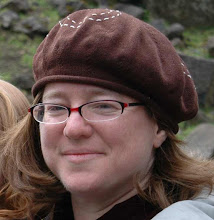In Curaçao, like in Barbados, Suriname, and Amsterdam, the Rabbi's house was part of the synagogue complex that also included a mikveh (ritual bath), school space, and the synagogue itself, called the “Snoa” in Curaçao and Esnoga in Amsterdam (Ladino: אסנוגה). Although the house in Barbados has been destroyed, the Rabbi's house in Curaçao is still standing and is beautifully maintained as part of the exquisite Jewish Historical Museum.
 |
| Panorama of the Rabbi's House on Kuiperstraat (Stevan J. Arnold, ©2012) |
 | |||
| Detail (Stevan J. Arnold, ©2012) |
 |
| Panorama of the Rabbi's House (Photo by Stevan J. Arnold, ©2012) |
Architecturally the house shares many features with its neighbors, including the graceful balconies (shown above and below) that were so popular in the Punda neighborhood during the eighteenth and nineteenth centuries that helped keep residents cooler.
Like Amsterdam’s
canal houses, older houses in Curaçao were usually built with brick. Unlike in
Amsterdam, however, where the brick was left exposed, in Curaçao the brick was
typically covered in plaster or stucco (Winkel-151-55).The plaster was then whitewashed or painted
in a “bright bold palette” not favored in the Netherlands. Allegedly houses began to be painted because
an early governor found the white-washed buildings “fatiguing to the eye” due
to the way the reflected the tropical sunlight.
 |
| Balcony of the Rabbi's House (Photo Stevan J. Arnold, ©2012) |
To visit this lovely historical house, pay the small entrance fee and enter through the main gates of the Snoa.
Resources:
- http://www.curacaomonuments.org
- Emmanuel, Isaac S. and Emmanuel, Suzanne A., History of the Jews of the Netherlands Antilles (Cincinnati, OH: AJA, 1970).
- Winkel, Pauline Pruneti, Scharloo: A Nineteenth Century Quarter of
Willemstad, Curaçao: Historical Architecture and its Background (Florence:
Edizioni Poligrafico Fiorentino, 1987).
- First photo of Rabbi's House by Kent Coupé, 2008.
- All Photos courtesy of the Jewish Atlantic World Database and Stevan J. Arnold




0 comments:
Post a Comment